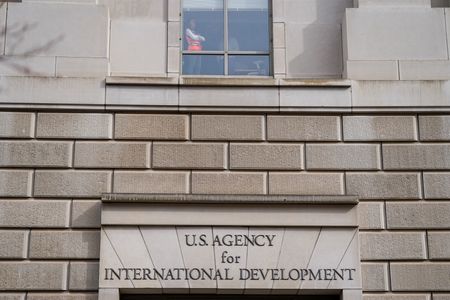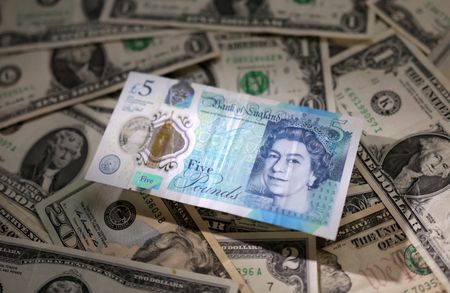By Marc Jones
LONDON (Reuters) -Romania holds the deciding round of its presidential election on Sunday with hard-right eurosceptic front-runner George Simion facing off against reformist Nicusor Dan.
The stakes are high for the EU and NATO member, especially given the stances of the two hopefuls and its eyewateringly large fiscal deficit.
The charts below show how the country’s currency and other financial markets have been rattled by the potential outcome.
1/CURRENCY SHOCK
Romania’s currency, the leu, fell nearly 3% against the euro in the wake of Simion’s unexpectedly strong first round election win, the subsequent collapse of the pro-Western coalition government and his anti-Brussels views and pledges to abandon tax hikes.
It resulted in its biggest weekly fall since 2009 and forced the central bank to spend billions of euros trying to stabilise it, analysts estimate. Before that the leu had been almost motionless for years.
2/FORWARD THINKING
Forward swaps markets – where traders and investors go to position for future currency moves – currently see the leu dropping from 5.1 to the euro to 5.2 to the euro in 3 months-time and to 5.4 per euro by this time next year.
However, some analysts think it could even dive to 6 if things really sour, a government proves hard to form, Romania’s credit rating gets cut and a disgruntled Brussels starts cutting off EU funding.
“The outcome of the election could be quite binary and the downside for asset prices even from here could be quite substantial if Simion wins,” Yvette Babb, a portfolio manager at William Blair said.
3/DEGRADING
Romania’s prized investment grade credit rating seems to have been dangling by a thread for years but analysts are increasingly convinced this could be the moment it gets cut down to ‘junk’ grade.
It could even be the start of a series of downgrades. The cost to insure Romania’s bonds using derivatives – or Credit Default Swaps – has shot up over the last month and is now as expensive as insuring a much lower BB bracket country.
The underlying issue is that Romania’s budget deficit was 9.3% of its GDP, or economic output, last year, nearly double the government’s target and without major spending cuts or tax hikes is likely to be well over 7% this year as well.
On the positive side, its debt pile at 55% of GDP is still well below the 81% average among EU countries. That, however, does include the likes of Greece, Italy and France.
“The issue is whether they are going to have a functioning government that can implement fiscal measures,” Aberdeen portfolio manager Viktor Szabo said. “It could be months”.
4/BURN RATE
Analysts estimate the central bank spent between 9-11 billion euros of its reserves stabilising the leu in the manic aftermath of Simion’s first round win.
Those reserves stood at around 62 billion euros – equivalent to five months of import cover – so a large chunk is likely to have be wiped out and one of the reasons JPMorgan thinks the leu might fall as much 20% as if the uncertainty worsens.
Romania has tapped international bond markets twice this year but is expected to need to borrow at least 7 billion euros more, a task that will now be far more costly than it would have been.
5/DEBT STRAINS
Concerns about finances and the potential loss of investment grade status have whacked both local and international bonds that are denominated in euros and were a big favourite of German, French and other leading euro zone investment funds looking to pick up some additional yield.
Most of those bonds have lost roughly 10% this year while the premium investors demand to hold Romanian debt rather than the bonds of neighbouring Hungary – where eurosceptic Viktor Orban is in charge – has ballooned considerably.
“The bonds have sold off to a level that is almost inconceivable,” Robeco’s head of Emerging Market debt Diliana Deltcheva said, given that Romania would still get EU funding, even if reduced somewhat.
(Reporting by Marc Jones and Gergely Szakacs; Editing by Toby Chopra)










